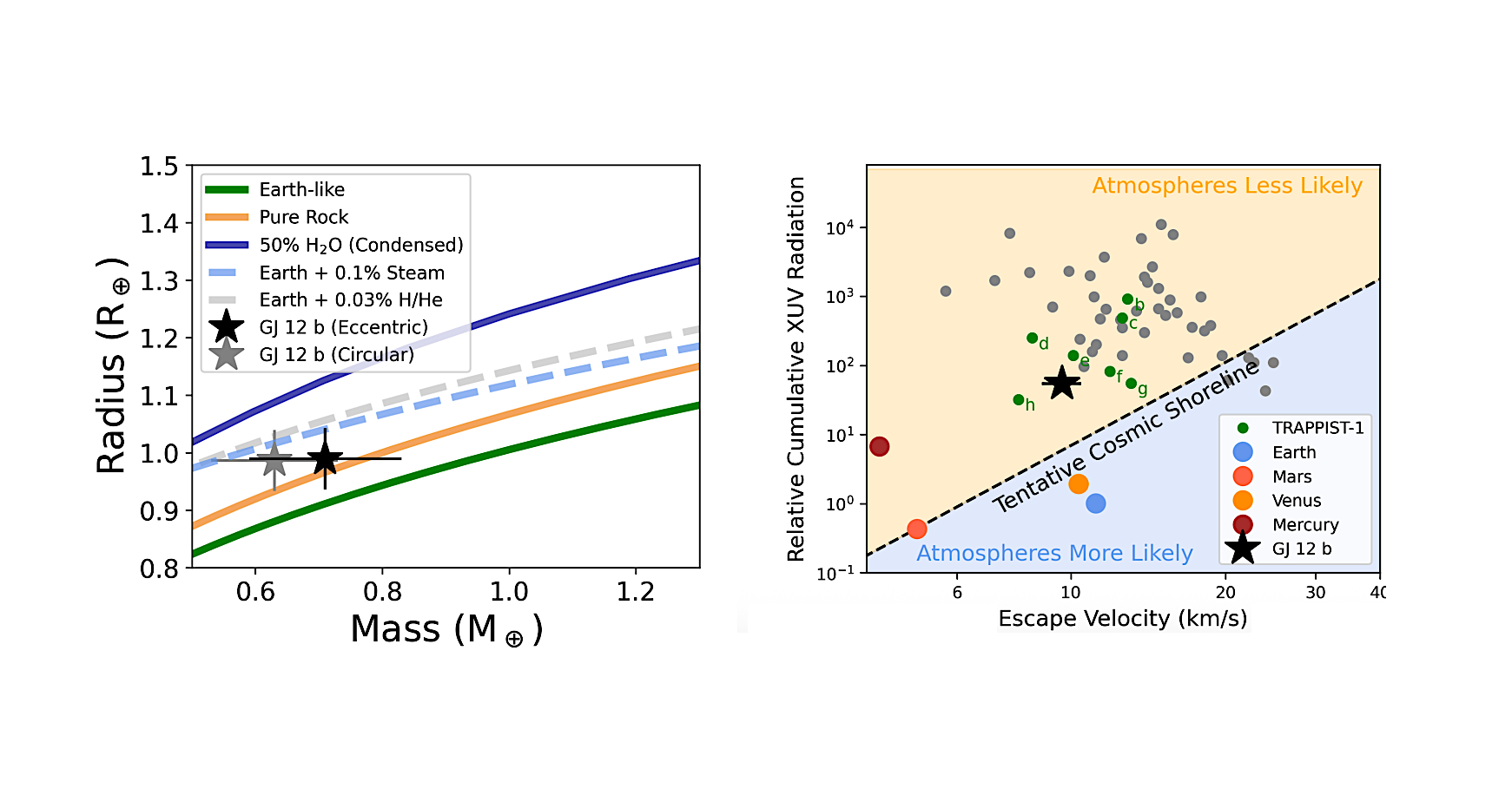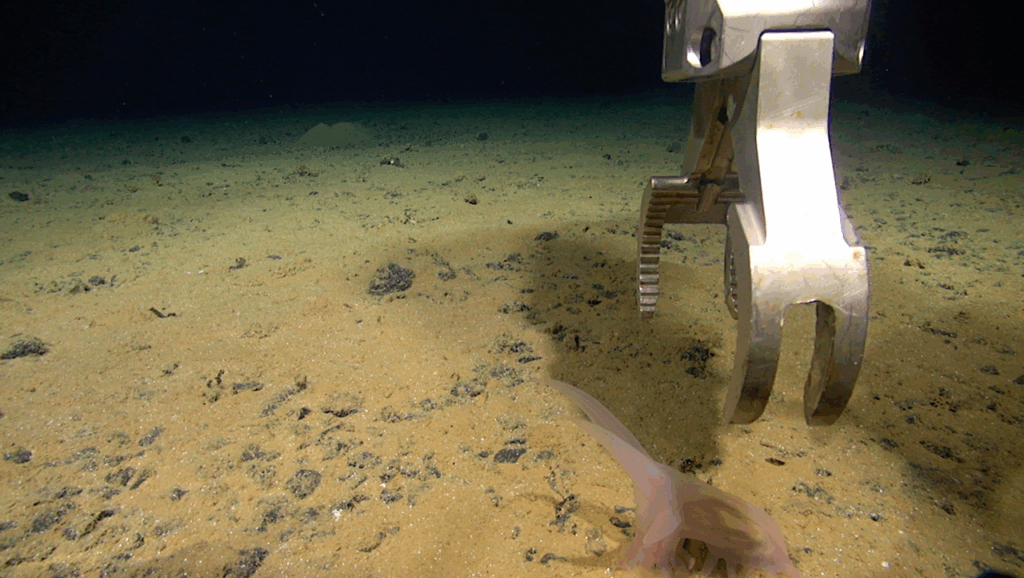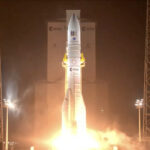Now Reading: An Earth-like Density For The Temperate Earth-sized Planet GJ 12b
-
01
An Earth-like Density For The Temperate Earth-sized Planet GJ 12b
An Earth-like Density For The Temperate Earth-sized Planet GJ 12b


[L] The mass and radius of our two models for GJ 12 b (circular and eccentric orbits) compared to various composition models from L. Zeng et al. (2019), as well as a steam atmosphere model from M. Turbet et al. (2020) and a H/He atmosphere model from M. C. Nixon & N. Madhusudhan (2021) and M. C. Nixon et al. (2024). We note that the 50% water model, which is from L. Zeng et al. (2019), both assumes a planet temperature of 300 K, which is very close to the actual equilibrium temperature of this planet. — astro-ph.EP
[R] The cosmic shoreline formulation from E. K. Pass et al. (2025) for small planets orbiting mid-to-late M dwarfs within 50 pc, showing our eccentric model for GJ 12 b (black star) in escape velocity versus XUV radiation space compared to the solar system planets (various colors), TRAPPIST-1 planets (green), and other planets with Rp 1.8 R⊕ (gray). The location of the tentative shoreline is placed based on what we know from the solar system, with Mars on the shoreline while Mercury is airless. — astro-ph.EP
While JWST has provided us with the opportunity to probe the atmospheres of potentially-habitable planets, observations of the TRAPPIST-1 system have shown us that active stars severely complicate efforts at studying their planets.
GJ 12b is a newly-discovered temperate (Teq ~ 300 K), Earth-sized (Rp = 0.96 +/- 0.05 Earth radii) planet orbiting an inactive M dwarf that might be a good alternate to the TRAPPIST-1 planets for atmospheric characterization.
In this paper, we use MAROON-X radial velocities to measure a mass of 0.71 +/- 0.12 Earth masses for GJ 12b. We also find moderate evidence that the planet has an eccentric (e ~ 0.16) orbit. GJ 12b’s mass results in a planetary density comparable to or less dense than Earth, possibly indicating the presence of water or a low bulk iron mass fraction.
With its low mass, GJ 12b is likely within reach of JWST transmission spectroscopy observations, making it an excellent target for determining the location of the cosmic shoreline.
Its low mass may mean that the planet could have trouble retaining its primary atmosphere during the star’s active pre-main-sequence phase. However, if it has a heightened eccentricity, it may be able to sustain a secondary atmosphere through tidally-induced volcanism.
Madison Brady, Jacob Bean, Ritvik Basant, Nina Brown, Tanya Das, Matthew Nixon, Rafael Luque, Caroline Piaulet-Ghorayeb, Michael Radica, Andreas Seifahrt, Julian Stürmer, Lily Zhao
Comments: 23 pages, 14 figures, submitted to AJ
Subjects: Earth and Planetary Astrophysics (astro-ph.EP)
Cite as: arXiv:2506.20561 [astro-ph.EP] (or arXiv:2506.20561v1 [astro-ph.EP] for this version)
https://doi.org/10.48550/arXiv.2506.20561
Focus to learn more
Submission history
From: Madison Brady
[v1] Wed, 25 Jun 2025 15:58:07 UTC (4,548 KB)
https://arxiv.org/abs/2506.20561
Astrobiology,
Stay Informed With the Latest & Most Important News
-
 012024 in Review: Highlights from NASA in Silicon Valley
012024 in Review: Highlights from NASA in Silicon Valley -
 02Panasonic Leica Summilux DG 15mm f/1.7 ASPH review
02Panasonic Leica Summilux DG 15mm f/1.7 ASPH review -
 03From Polymerization-Enabled Folding and Assembly to Chemical Evolution: Key Processes for Emergence of Functional Polymers in the Origin of Life
03From Polymerization-Enabled Folding and Assembly to Chemical Evolution: Key Processes for Emergence of Functional Polymers in the Origin of Life -
 04How New NASA, India Earth Satellite NISAR Will See Earth
04How New NASA, India Earth Satellite NISAR Will See Earth -
 05And Thus Begins A New Year For Life On Earth
05And Thus Begins A New Year For Life On Earth -
 06Astronomy Activation Ambassadors: A New Era
06Astronomy Activation Ambassadors: A New Era -
07SpaceX launch surge helps set new global launch record in 2024




















